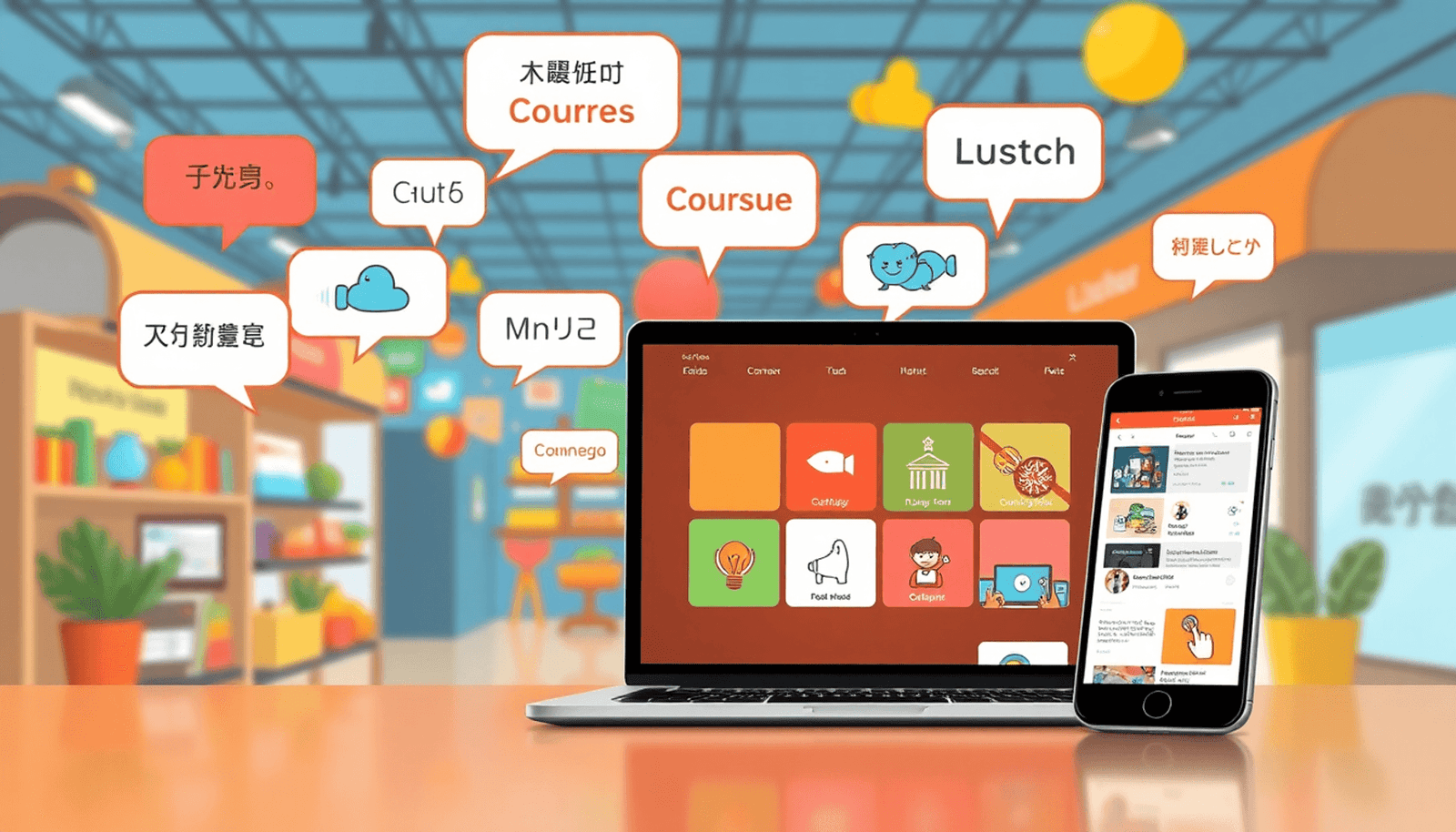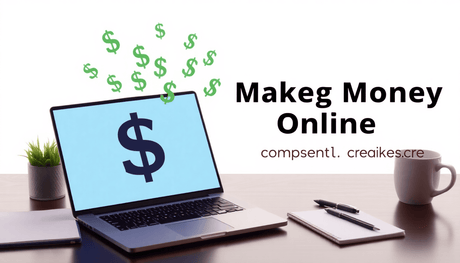The multi-language PLR course business model presents a lucrative opportunity for entrepreneurs to tap into diverse global markets. By offering digital products in multiple languages, businesses can reach a wider audience and increase revenue streams significantly. Key benefits of catering to various language markets with PLR courses include enhanced accessibility, cultural relevance, and the ability to meet the specific needs of non-English speaking audiences.
To successfully launch and manage a multi-language PLR course business, one must consider several essential steps and strategies. This guide will delve into those strategies and also explore how to maximize the potential for success in the digital product reselling landscape.
A viable option for entrepreneurs looking to enter this market is to leverage existing PLR Bundles that provide access to multiple courses from the same instructor at incredible prices. These bundles can be an excellent starting point for creating a multi-language PLR course business.
Furthermore, it's important to source high-quality content from reputable instructors. For instance, you might consider exploring the offerings of renowned educators like Joseph Delgadillo, Maiza Nara, or Bilal Khan. Their courses could serve as valuable resources in your journey towards establishing a successful multi-language PLR course business.
In addition, understanding the common questions or concerns about this business model can provide valuable insights. Therefore, consulting resources such as our comprehensive FAQ page could prove beneficial.
By following these guidelines and utilizing available resources effectively, entrepreneurs can significantly enhance their chances of success in the multi-language PLR course business model.
Understanding PLR Courses
Private Label Rights (PLR) courses are digital products that grant individuals the right to modify, brand, and resell the content as their own. Essentially, PLR allows for the repurposing of existing materials without the need to create content from scratch. This model offers a cost-effective solution for entrepreneurs looking to enter the online education space.
Types of Content Included in PLR
PLR content can encompass a variety of formats, including video courses, eBooks, worksheets, templates, and more. These materials cover diverse topics and cater to different learning preferences. Video courses are particularly popular as they provide engaging visual content that enhances the learning experience for students. Additionally, eBooks offer a convenient way to deliver information in a comprehensive written format.
Through PLR courses, entrepreneurs gain access to ready-made educational resources that can be customized to suit their target audience's needs. This flexibility allows for quick entry into the market without the time-consuming task of content creation from scratch. For instance, on platforms like Uthena, one can buy video courses with Private Label Rights and retain all the income generated from sales.
Advantages of Launching a Multi-Language PLR Course Business
With the rise of digital learning, launching a multi-language PLR course business presents numerous advantages.
1. Market Expansion
One of the most significant benefits is [market expansion](https://uthena.com/collections/newest-online-courses-on-uthena), as it allows you to reach non-English speaking audiences. By offering multi-language courses, you can cater to a diverse range of learners, thereby increasing your customer base and revenue potential.
2. Generating Passive Income
Additionally, this business model opens up avenues for [generating passive income](https://uthena.com/pages/apply-as-instructor). With reselling rights and affiliate programs, you can earn money even while you sleep. This is particularly advantageous in the online course market where platforms like Uthena offer a plethora of options. From mastering Linux and CyberSecurity with Ramsai Dupati's courses to exploring transformative resources on addiction and entrepreneurship by Jerry Banfield, the possibilities are endless.
Launching a multi-language PLR course business not only facilitates market expansion but also provides a lucrative source of passive income through various online platforms.
Sourcing High-Quality Multi-Language PLR Content
Criteria for Choosing Reputable PLR Providers
Look for providers like Uthena that offer high-quality whitelabel courses suitable for reselling and customization. Their offerings include expert-led courses by professionals such as Lambros Lazopoulos, Dr. Elisaveta Pavlova, and Alex Genadinik, ensuring valuable content created by experts in their respective fields.
Importance of Flexible Licensing
Opt for providers that offer rebranding rights, allowing you to customize and sell the courses without attribution. Choose PLR content with licenses that permit seamless adaptation to cater to diverse language markets effectively. This flexibility is crucial when it comes to [course customization](https://uthena.com/collections/alex-genadinik) to effectively meet the needs of various language audiences.
Setting Up Your Multi-Language Course Delivery Platform
Choosing the right Learning Management System (LMS) is critical for launching a successful multi-language PLR course business. An LMS must support multiple languages seamlessly to ensure your diverse audience experiences the course in their preferred language. Key features to prioritize include:
- Multi-language interface and content support: Enables learners to switch languages easily without confusion.
- Branding customization: Allows you to apply your own logo, colors, and domain name to maintain a professional, cohesive brand identity.
- User-friendly course builder: Simplifies uploading and organizing courses in different languages.
- Mobile responsiveness: Ensures courses look great and function well on smartphones and tablets across various regions.
- Integrated payment gateways: Supports multiple currencies to facilitate global transactions smoothly.
White-label LMS solutions offer a powerful advantage by letting you fully brand the platform as your own, eliminating third-party visibility. This builds trust and strengthens customer loyalty.
LearnWorlds stands out as a popular choice for entrepreneurs launching multi-language PLR courses. It supports full white-label branding and offers robust multilingual capabilities, making it easier to manage varied course versions without technical hassles. Its intuitive design tools also help tailor the learner experience for different cultural preferences.
Selecting an LMS that balances flexibility, language support, and brand control sets the foundation for delivering your multi-language PLR courses professionally and effectively.
In addition to traditional LMS platforms, there are also innovative tech solutions available that can further enhance your multi-language course delivery. For instance, professionals like Rahul Agarwal, an experienced Flutter developer, are building communities around cross-platform application development which could be beneficial for creating user-friendly interfaces for your courses.
Moreover, Arbaz Khan, a Computer Science Engineer specializing in IoT, AI, and Python programming, offers automation projects that could streamline various aspects of your course delivery process. These technological advancements can provide a significant edge in managing your multi-language PLR courses effectively.
Customizing and Branding Your PLR Courses
To make your PLR (Private Label Rights) courses stand out and resonate with your target audience, it's essential to customize the content and incorporate branding strategies. Here are some key aspects to consider:
1. Modifying Course Content
One of the significant advantages of PLR courses is that you have the flexibility to modify the content according to your specific audience needs and cultural nuances. This customization allows you to create a more relevant and engaging learning experience for your learners.
For example, if you're targeting a specific demographic or region, you can adapt the course materials, examples, and case studies to align with their interests and preferences. This level of personalization demonstrates that you understand your audience and are committed to delivering value.
Design courses offer an excellent opportunity for customization as well. You can tailor the visual elements, graphics, and overall aesthetics of the course to match your brand identity or appeal to a particular group.
2. Adding Personalized Branding Elements
In addition to modifying the course content, incorporating personalized branding elements is crucial for establishing authenticity and building trust with your audience. Here are some effective branding strategies you can implement:
- Logo Placement: Include your brand logo prominently in the course materials, such as on slides, handouts, or video intros/outros. This reinforces brand recognition and creates a cohesive visual identity.
- Color Palette Consistency: Use your brand's color palette consistently throughout the course design. This helps create a visually appealing experience while reinforcing brand association.
- Voiceover or Host Introduction: If applicable, consider recording a voiceover or video introduction featuring yourself or a brand representative. This personal touch adds authenticity and establishes a connection with learners.
- Branded Resources: Create supplementary resources like workbooks, templates, or guides that align with your brand style. These materials can enhance the learning experience while promoting your brand.
By customizing the course content and incorporating personalized branding elements, you can create PLR courses that not only meet the needs of your audience but also reflect your unique identity as a creator or business.
Implementing Effective Marketing Strategies for Diverse Audiences
1. Leveraging Social Media Platforms
Utilize platforms like Instagram, TikTok, and Pinterest to reach diverse language groups. Tailor your content and messaging to resonate with each audience segment effectively.
2. Utilizing Email Marketing Automation
Implement automated email marketing campaigns to nurture leads globally. Personalize messages based on language preferences and provide valuable content to engage potential customers across different regions.
By harnessing the power of social media and email marketing automation, you can create targeted campaigns that resonate with diverse audiences, driving engagement and conversions for your multi-language PLR course business. For more insights into [digital marketing strategies](https://uthena.com/collections/marketing-courses) that can help you achieve these goals, consider exploring comprehensive resources available online.
Automating Sales Funnels and Customer Acquisition
Automating sales funnels is crucial for efficiently managing a multi-language PLR course business. You want to create seamless purchase experiences for customers regardless of their language preferences. This means designing sales funnels that adapt dynamically, offering localized content, payment options, and checkout processes.
Key elements for effective sales funnels automation include:
- Multi-language landing pages tailored to different audience segments.
- Automated email sequences triggered by user actions, delivering personalized follow-ups in the customer’s preferred language.
- Integration with payment gateways supporting multiple currencies.
Managing leads and customer communication requires robust customer acquisition tools that centralize interactions. Platforms like ActiveCampaign, HubSpot, or ConvertKit allow you to segment contacts by language, behavior, and engagement level. This segmentation helps you send targeted messages without manual intervention.
Features to prioritize in these tools:
- Lead scoring to identify high-potential buyers.
- Automated tagging based on course interest or purchase history.
- Multi-channel communication including email, SMS, and chatbots.
Automated workflows reduce the burden of manual follow-ups and ensure prospects progress smoothly through your sales pipeline. When paired with the right multi-language sales funnel setup, you can multiply conversions while maintaining consistent engagement across diverse markets.
Pricing Models and Monetization Approaches in the Multi-Language PLR Course Business
Choosing the right pricing strategies is crucial to maximize revenue and attract a broad customer base in a multi-language PLR course business. Several common pricing models work effectively in this niche:
1. One-time Purchase with Lifetime Access
This model allows customers to pay once and access the course indefinitely. It appeals to buyers who prefer no recurring fees and value long-term availability. Offering lifetime access can justify higher price points, especially for comprehensive courses with ongoing updates.
2. Subscription-Based Pricing
Charging customers monthly or annually encourages steady income flow. Subscriptions work well if you provide regular content updates or exclusive member perks. You can offer tiered plans based on access level or additional features like coaching sessions.
3. Tiered Pricing Packages
Bundling courses with different levels of content, support, or bonuses enables targeting various segments. For example, a basic package might include just the course videos, while premium tiers add worksheets, community access, or personalized feedback.
4. Pay-Per-Course Model
Selling individual courses separately gives buyers flexibility to choose only what they need. This approach fits entrepreneurs seeking specific skills without committing to larger bundles.
Monetization can be enhanced by combining these models with affiliate marketing programs. Affiliates promote your multi-language courses across their networks, generating more leads and sales without extra marketing effort from you.
Experimenting with these pricing strategies helps identify what resonates best with diverse language markets and buyer personas you serve.
Providing Ongoing Support, Course Updates, and Legal Considerations in Your Multi-Language PLR Course Business
Delivering excellent customer support is essential when running a multi-language PLR course business. Your students come from various backgrounds and may face unique challenges accessing or understanding course material. Offering:
- Live Q&A sessions tailored to different time zones and languages
- Active community forums or social groups for peer-to-peer help
- Responsive technical assistance for platform or content issues
builds trust and encourages engagement, which increases course completion rates and positive feedback.
Course updates are another critical factor. PLR content providers like Uthena, often release improved versions or additional modules. Keeping your courses current reflects professionalism and adds value to your customers. Automate notifications for updates to ensure your audience benefits without delay.
Legal considerations revolve mainly around the PLR license terms you acquire. Pay close attention to:
- Permissions on customizing content to fit cultural nuances or branding needs
- Restrictions on reselling rights, especially regarding attribution requirements
- Limitations on offering the same course through multiple channels
Understanding these details prevents potential copyright infringements and protects your business reputation.
Running a successful multi-language PLR course requires balancing quality support with strict adherence to licensing rules. Implement these strategies to build credibility and long-term customer loyalty while maximizing your revenue potential.
FAQs (Frequently Asked Questions)
What is a multi-language PLR course business and how can it benefit me?
A multi-language PLR (Private Label Rights) course business involves reselling digital courses that are available in multiple languages, allowing you to cater to diverse language markets. This business model expands your reach to non-English speaking audiences, enabling market expansion and generating passive income through reselling rights and affiliate programs.
What types of content are typically included in PLR courses?
PLR courses usually comprise various digital products such as video courses, eBooks, worksheets, and other educational materials. These ready-made contents come with Private Label Rights, allowing you to rebrand and customize them to suit your target audience's needs.
How do I source high-quality multi-language PLR content for my business?
To source high-quality multi-language PLR content, look for reputable PLR providers offering done-for-you expert courses with flexible licensing. It's important to choose providers that allow rebranding and reselling without attribution so you can customize the content effectively and maintain authenticity.
What features should I consider when setting up a multi-language course delivery platform?
When setting up your course delivery platform, prioritize Learning Management Systems (LMS) that support multiple languages and offer white-label solutions for branding customization. Popular platforms like LearnWorlds provide robust features suitable for delivering multi-language PLR courses efficiently.
How can I effectively market my multi-language PLR courses to diverse audiences?
Effective marketing strategies include leveraging social media platforms such as Instagram, TikTok, and Pinterest to target different language groups. Additionally, using email marketing automation helps nurture leads globally. Tailoring your digital marketing approach ensures better engagement across diverse audiences.
What ongoing support and legal considerations should I provide in my multi-language PLR course business?
Providing community support, live Q&A sessions, and technical assistance is crucial for customer satisfaction worldwide. Legally, it's important to understand the terms of your PLR licenses regarding customization and reselling rights to ensure compliance while offering updated course content and reliable customer service.









